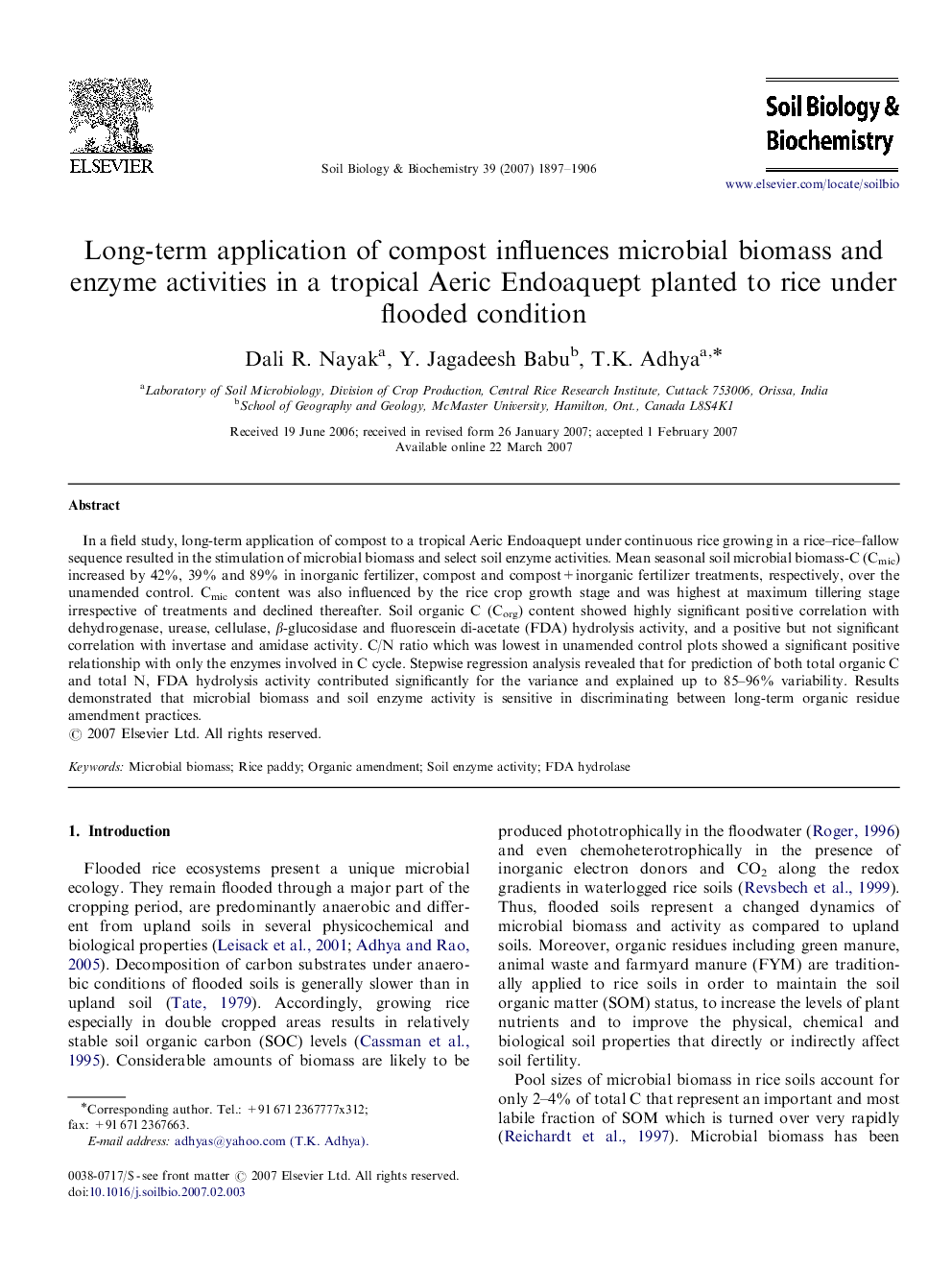| Article ID | Journal | Published Year | Pages | File Type |
|---|---|---|---|---|
| 2026055 | Soil Biology and Biochemistry | 2007 | 10 Pages |
In a field study, long-term application of compost to a tropical Aeric Endoaquept under continuous rice growing in a rice–rice–fallow sequence resulted in the stimulation of microbial biomass and select soil enzyme activities. Mean seasonal soil microbial biomass-C (Cmic) increased by 42%, 39% and 89% in inorganic fertilizer, compost and compost+inorganic fertilizer treatments, respectively, over the unamended control. Cmic content was also influenced by the rice crop growth stage and was highest at maximum tillering stage irrespective of treatments and declined thereafter. Soil organic C (Corg) content showed highly significant positive correlation with dehydrogenase, urease, cellulase, β-glucosidase and fluorescein di-acetate (FDA) hydrolysis activity, and a positive but not significant correlation with invertase and amidase activity. C/N ratio which was lowest in unamended control plots showed a significant positive relationship with only the enzymes involved in C cycle. Stepwise regression analysis revealed that for prediction of both total organic C and total N, FDA hydrolysis activity contributed significantly for the variance and explained up to 85–96% variability. Results demonstrated that microbial biomass and soil enzyme activity is sensitive in discriminating between long-term organic residue amendment practices.
